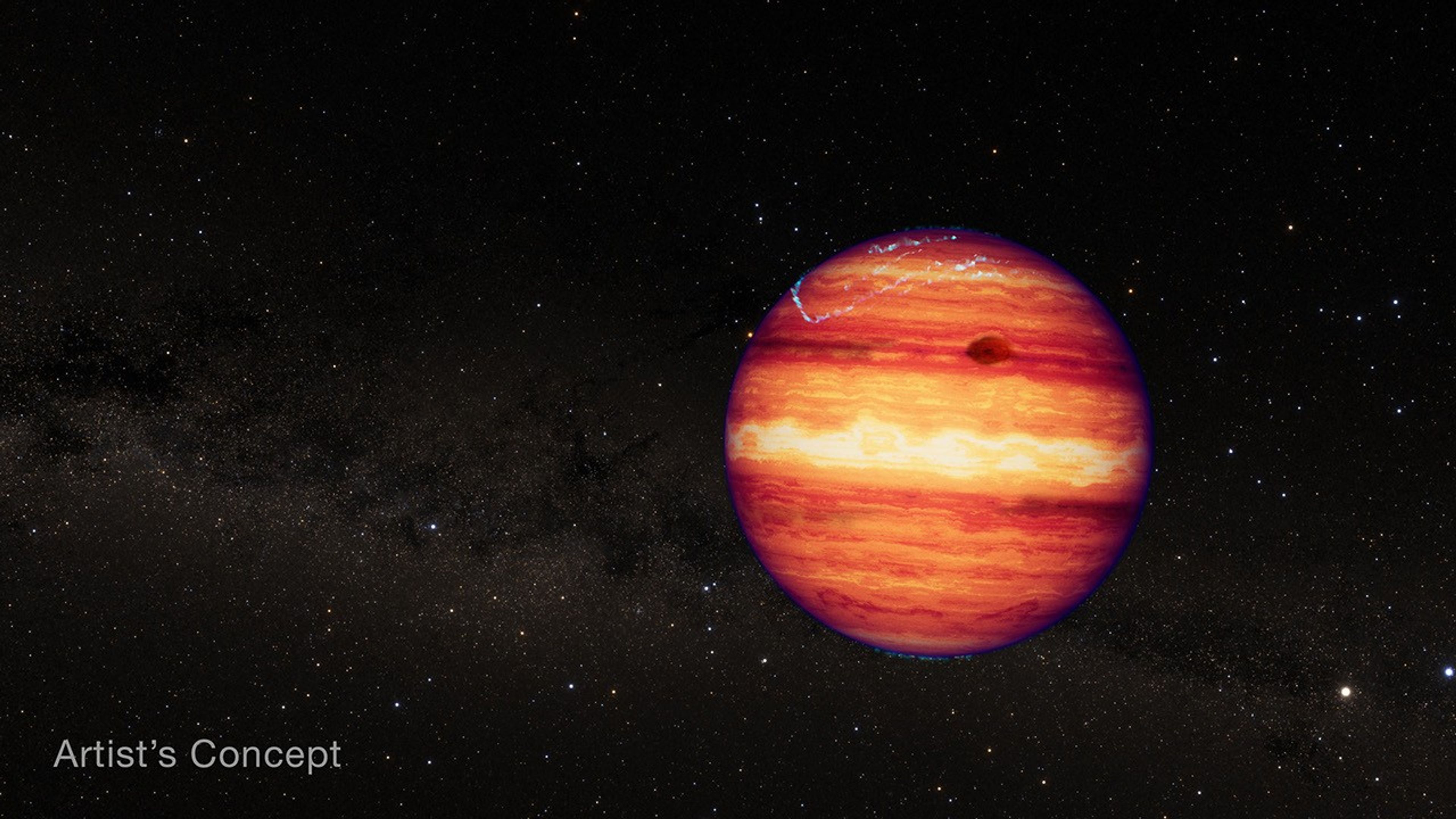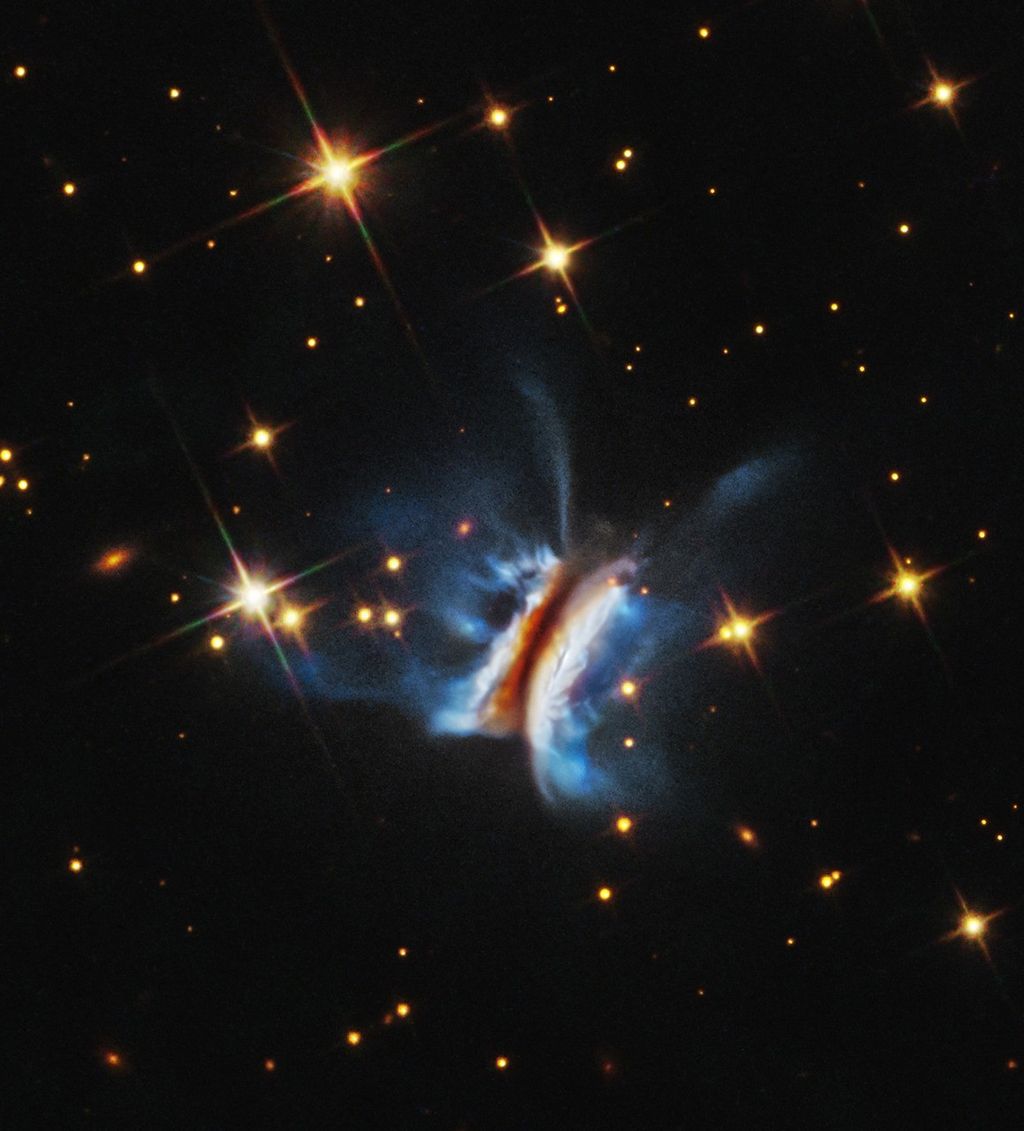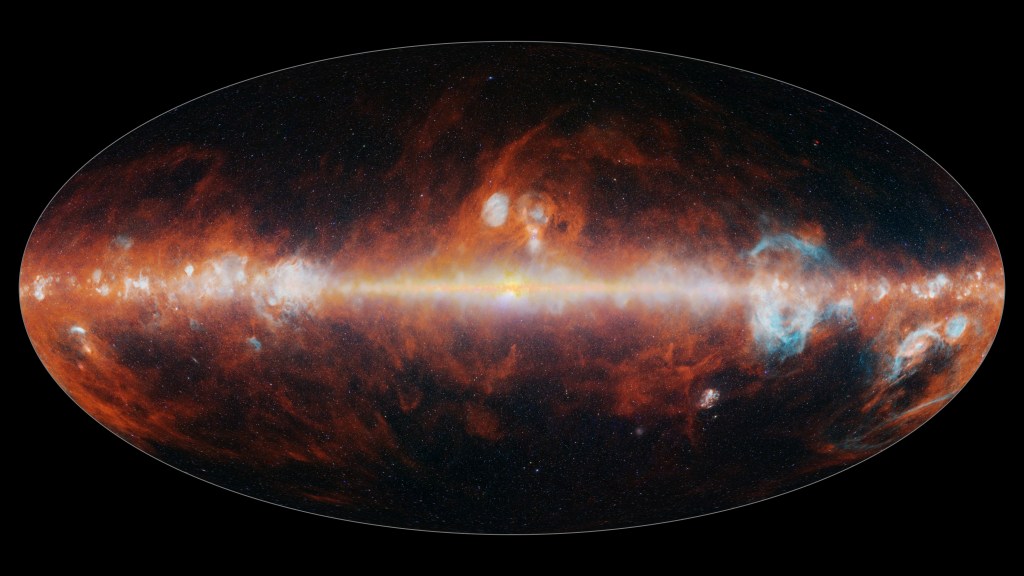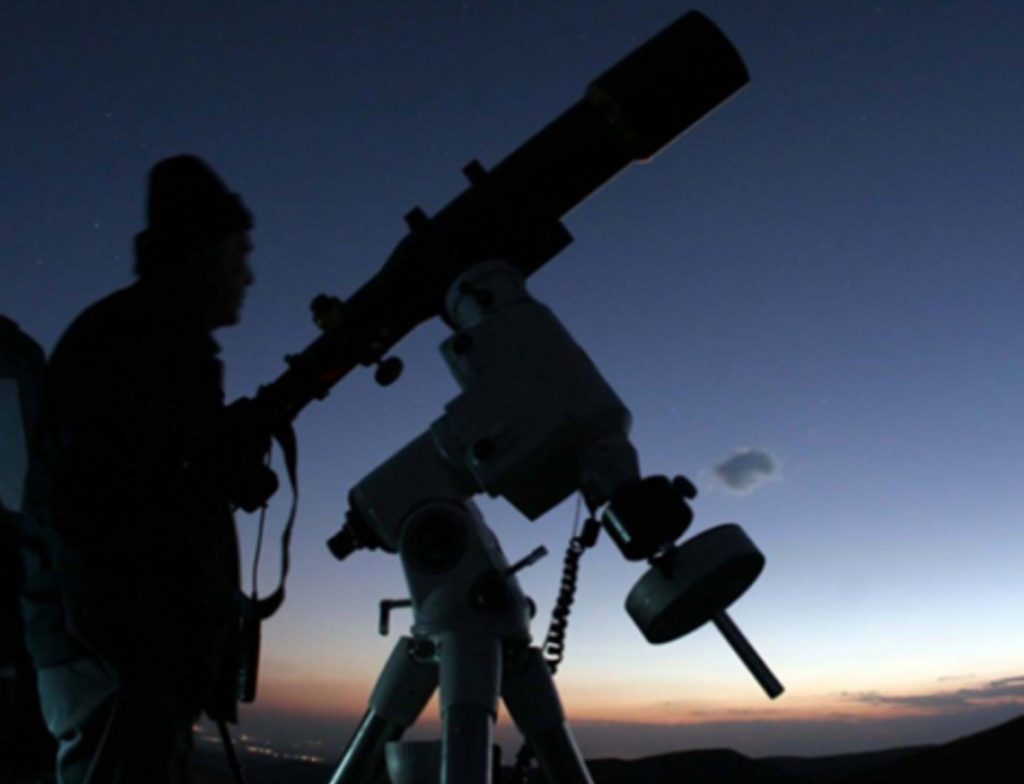1 min read
Isolated Planetary-Mass Object SIMP 0136 (Artist’s Concept)

This artist’s concept shows what the isolated planetary-mass object SIMP 0136 could look like based on recent observations from NASA’s James Webb Space Telescope and previous observations from Hubble, Spitzer, and numerous ground-based telescopes.
SIMP 0136 is about 13 times the mass of Jupiter. Although it is thought to have the structure and composition of a gas giant, it is not technically classified as an exoplanet because it doesn’t orbit its own star.
The colors shown in the illustration represent near-infrared light, which is invisible to human eyes. SIMP 0136 is relatively warm — about 1,500 degrees Fahrenheit (825 degrees Celsius or 1,100 kelvins) — but is not hot enough to give off enough visible light to see from Earth, and is not illuminated by a host star. The bluish glow near the poles represents auroral energy (light given off by electrons spiraling in a magnetic field) which has been detected at radio wavelengths.
Researchers used NIRSpec (Near-infrared Spectrograph) and MIRI (Mid-Infrared Instrument) to monitor the brightness of SIMP 0136 over two full rotations in July 2023. By analyzing the change in brightness of different wavelengths over time, researchers were able to detect variability in cloud cover at different depths, temperature variations in the high atmosphere, and changes in carbon chemistry as different sides of the object rotated in and out of view.
SIMP 0136 is located within the Milky Way, about 20 light-years from Earth, in the constellation Pisces. It is the brightest isolated planet or brown dwarf visible from the Northern Hemisphere, and is thought to be about 200 million years old. This illustration is based on Webb's spectroscopic observations. Webb has not captured a direct image of the object.
About the Object
- R.A. PositionR.A. PositionRight ascension – analogous to longitude – is one component of an object's position.01h 36m 56.56s
- Dec. PositionDec. PositionDeclination – analogous to latitude – is one component of an object's position.+09° 33' 47.31"
- ConstellationConstellationOne of 88 recognized regions of the celestial sphere in which the object appears.Pisces
- DistanceDistanceThe physical distance from Earth to the astronomical object. Distances within our solar system are usually measured in Astronomical Units (AU). Distances between stars are usually measured in light-years. Interstellar distances can also be measured in parsecs.20 light-years (6 parsecs)
- Object NameObject NameA name or catalog number that astronomers use to identify an astronomical object.SIMP 0136
- Object DescriptionObject DescriptionThe type of astronomical object.Isolated Planetary-Mass Object
- Release DateMarch 3, 2025
- Science ReleaseNASA’s Webb Exposes Complex Atmosphere of Starless Super-Jupiter
- CreditArtwork: NASA, ESA, CSA, Joseph Olmsted (STScI)
Downloads
Related Images & Videos

Isolated Planetary-Mass Object SIMP 0136 (NIRSpec Light Curves)
These light curves show the change in brightness of three different sets of wavelengths (colors) of near-infrared light coming from the isolated planetary-mass object SIMP 0136 as it rotated. The light was captured by Webb’s NIRSpec (Near-Infrared Spectrograph), which collected...
Share
Details
Laura Betz
NASA’s Goddard Space Flight Center
Greenbelt, Maryland
laura.e.betz@nasa.gov
NASA, ESA, CSA, Joseph Olmsted (STScI)






























